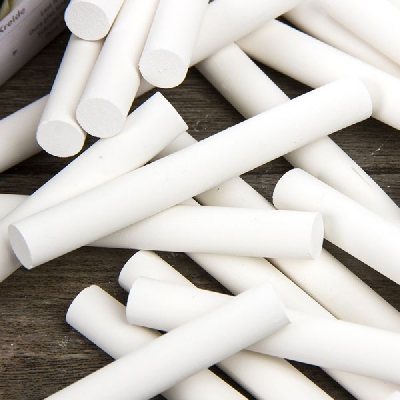
Have you ever wondered where the chalk comes from? Well, it originates from fossils. Chalk comes from the calcareous remains (fossils) of single-celled algae called coccolithophores and from the shells of single-celled marine animals known as foraminifera!
When foraminifera, coccolithophores and other die, their remains sink to the organisms bottom and accumulate as a fine-grained marine sediment known as ooze. These deposits, built up over many, many years, eventually consolidate into chalk rocks and give rise to chalk cliffs above sea level due to the movement of Earth. Such cliffs are found in many parts of the world. So, chalk is nothing but the white or light grey, porous limestone composed mainly of calcium carbonate quarried from chalk cliffs. Chalk is used for making lime and portland cement and for drawing on blackboard in schools. Finely ground and purified chalk is used as a filler in a wide variety of materials, including ceramics, putty, cosmetics, crayons, plastics, rubber, paper, and paints.
Chalk did not become standard in schools until the 19th century, when class sizes began to increase. Not only did instructors use large blackboards, but students also had individual chalkboards with chalk sticks and a sponge or cloth to use as an eraser. Pens and ink were the preferred tool for writing a final copy, but these were reserved for older students. At this time paper was expensive and rarely used. Chalk and blackboards are still the standard in classrooms today. Some alternate ways are available, but are patterned after the chalk and blackboard principle. For example – dry erase boards. They can be seen as a substitute for chalk and a blackboard.
Credit :History of Pencils
Picture Credit : Google




